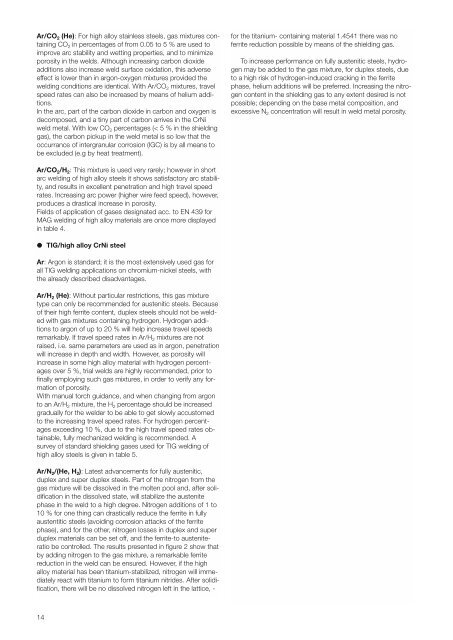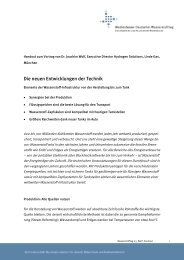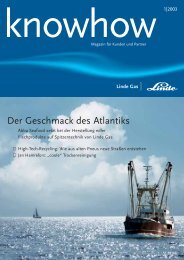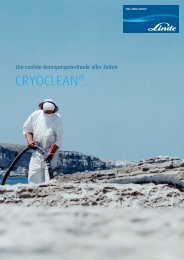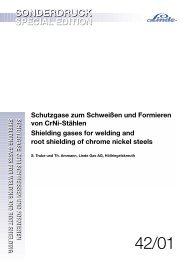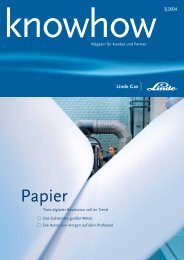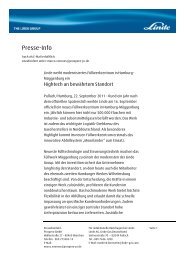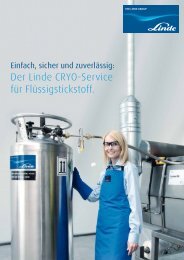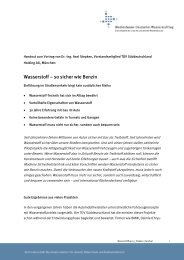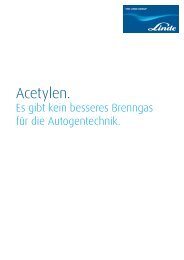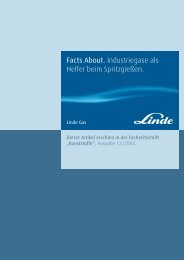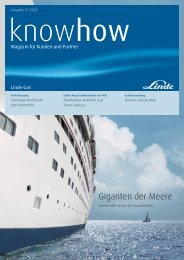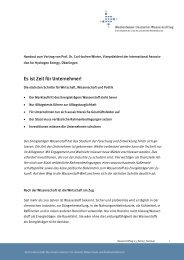Auswahl von Schutzgasen zum Schweißen von Stahlwerkstoffen A ...
Auswahl von Schutzgasen zum Schweißen von Stahlwerkstoffen A ...
Auswahl von Schutzgasen zum Schweißen von Stahlwerkstoffen A ...
Sie wollen auch ein ePaper? Erhöhen Sie die Reichweite Ihrer Titel.
YUMPU macht aus Druck-PDFs automatisch weboptimierte ePaper, die Google liebt.
Ar/CO 2 (He): For high alloy stainless steels, gas mixtures containing<br />
CO 2 in percentages of from 0.05 to 5 % are used to<br />
improve arc stability and wetting properties, and to minimize<br />
porosity in the welds. Although increasing carbon dioxide<br />
additions also increase weld surface oxidation, this adverse<br />
effect is lower than in argon-oxygen mixtures provided the<br />
welding conditions are identical. With Ar/CO 2 mixtures, travel<br />
speed rates can also be increased by means of helium additions.<br />
In the arc, part of the carbon dioxide in carbon and oxygen is<br />
decomposed, and a tiny part of carbon arrives in the CrNi<br />
weld metal. With low CO 2 percentages (< 5 % in the shielding<br />
gas), the carbon pickup in the weld metal is so low that the<br />
occurrance of intergranular corrosion (IGC) is by all means to<br />
be excluded (e.g by heat treatment).<br />
Ar/CO 2/H 2: This mixture is used very rarely; however in short<br />
arc welding of high alloy steels it shows satisfactory arc stability,<br />
and results in excellent penetration and high travel speed<br />
rates. Increasing arc power (higher wire feed speed), however,<br />
produces a drastical increase in porosity.<br />
Fields of application of gases designated acc. to EN 439 for<br />
MAG welding of high alloy materials are once more displayed<br />
in table 4.<br />
� TIG/high alloy CrNi steel<br />
Ar: Argon is standard; it is the most extensively used gas for<br />
all TIG welding applications on chromium-nickel steels, with<br />
the already described disadvantages.<br />
Ar/H 2 (He): Without particular restrictions, this gas mixture<br />
type can only be recommended for austenitic steels. Because<br />
of their high ferrite content, duplex steels should not be welded<br />
with gas mixtures containing hydrogen. Hydrogen additions<br />
to argon of up to 20 % will help increase travel speeds<br />
remarkably. If travel speed rates in Ar/H 2 mixtures are not<br />
raised, i.e. same parameters are used as in argon, penetration<br />
will increase in depth and width. However, as porosity will<br />
increase in some high alloy material with hydrogen percentages<br />
over 5 %, trial welds are highly recommended, prior to<br />
finally employing such gas mixtures, in order to verify any formation<br />
of porosity.<br />
With manual torch guidance, and when changing from argon<br />
to an Ar/H 2 mixture, the H 2 percentage should be increased<br />
gradually for the welder to be able to get slowly accustomed<br />
to the increasing travel speed rates. For hydrogen percentages<br />
exceeding 10 %, due to the high travel speed rates obtainable,<br />
fully mechanized welding is recommended. A<br />
survey of standard shielding gases used for TIG welding of<br />
high alloy steels is given in table 5.<br />
Ar/N 2/(He, H 2): Latest advancements for fully austenitic,<br />
duplex and super duplex steels. Part of the nitrogen from the<br />
gas mixture will be dissolved in the molten pool and, after solidification<br />
in the dissolved state, will stabilize the austenite<br />
phase in the weld to a high degree. Nitrogen additions of 1 to<br />
10 % for one thing can drastically reduce the ferrite in fully<br />
austentitic steels (avoiding corrosion attacks of the ferrite<br />
phase), and for the other, nitrogen losses in duplex and super<br />
duplex materials can be set off, and the ferrite-to austeniteratio<br />
be controlled. The results presented in figure 2 show that<br />
by adding nitrogen to the gas mixture, a remarkable ferrite<br />
reduction in the weld can be ensured. However, if the high<br />
alloy material has been titanium-stabilized, nitrogen will immediately<br />
react with titanium to form titanium nitrides. After solidification,<br />
there will be no dissolved nitrogen left in the lattice, -<br />
14<br />
for the titanium- containing material 1.4541 there was no<br />
ferrite reduction possible by means of the shielding gas.<br />
To increase performance on fully austenitic steels, hydrogen<br />
may be added to the gas mixture, for duplex steels, due<br />
to a high risk of hydrogen-induced cracking in the ferrite<br />
phase, helium additions will be preferred. Increasing the nitrogen<br />
content in the shielding gas to any extent desired is not<br />
possible; depending on the base metal composition, and<br />
excessive N 2 concentration will result in weld metal porosity.


